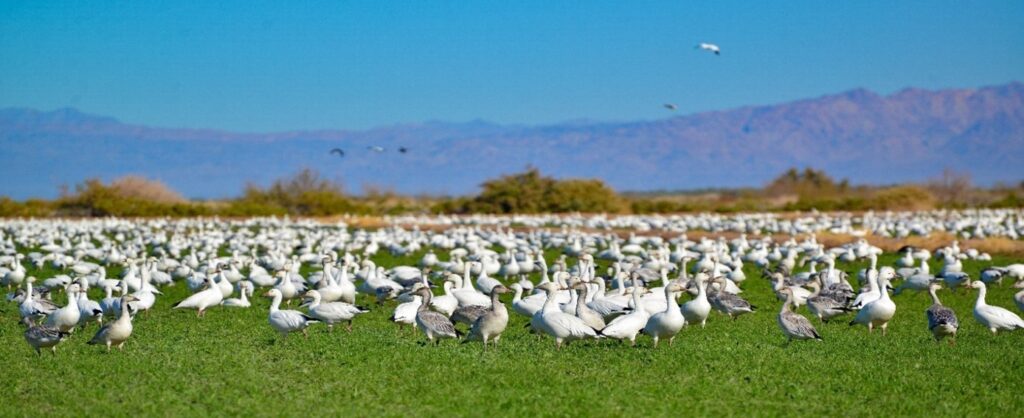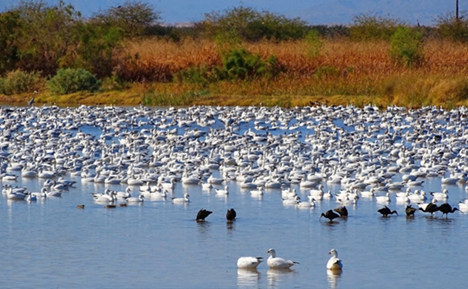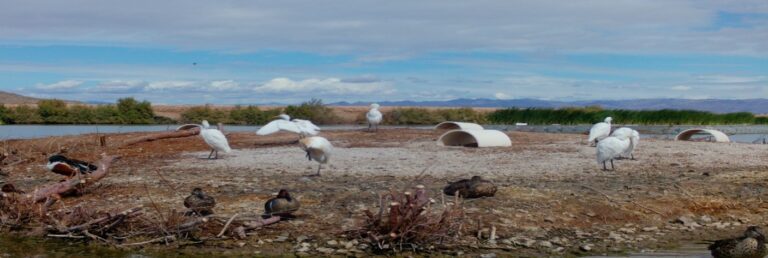Sonny Bono Salton Sea National Wildlife Refuge
Located at 906 W. Sinclair Rd. in Calipatria, CA., is open year round from sunrise to sunset. There are activities for all including an observation platform, interpretive trails and exhibits. Many hiking trails can be enjoyed

The Refuge offers a mile hike to a dormant volcano to view the vastness of the Salton Sea. It’s a good birding spot.
Established in 1930 and dedicated to Congressman Sonny Bono for his massive conservation efforts at the Salton Sea in 1998, the refuge provides vital wetland and grassland habitat for a plethora of migratory birds along the Pacific flyway. The majority of our accessible refuge wetlands lay in our Unit 1 management area, which can be accessed through the intersection of Vendel and Banister Rd. Visitors to Unit 1 can walk our Hardenberger Trail, occupy our 2 photo blinds (both of which have been recently renovated), or use our observation tower and platform located next to the parking lot. Unit 1 also provides visitors with a small outhouse and a kiosk. Our Headquarters, Visitor Center, newly renovated bathrooms and water fountain. While here visitors can also access our Rockhill Trail, a 2-mile loop. Since its establishment, the refuge has had a fluid relationship with the shoreline and is not completely landlocked due to the shrinking of the sea. Though visitors can still take in sweeping views of the Sea and shoreline from our Rockhill trail which ends on top of our “active” volcano.


Located in California, just 40 miles north of Mexico, the refuge is on the border of the Sonoran Desert ecosystem and the massive commercial agriculture operation that is the Imperial Valley. At an elevation of 227 feet below sea level, the refuge sees some of the hottest temperatures in the nation. Daily temperatures during May through October exceed 100°F, with the highs ranging from 116°-120°F.
The refuge is separated into 2 different management units along the southern end of the sea. Each unit is composed of a mosaic of different habitats like cattail marshes, shorelines, open water wetlands, grass fields, and desert shrubs that are maintained by the refuge staff to provide a sanctuary to over 100,000, birds, close to 40,000 of which are waterbirds, in a state that has lost 90-95% of its natural wetlands. Currently, the refuge actively managed over 3000 acres of land for the habitats listed above. Of those 3000 acres, refuge staff farm and irrigate over 2000 acres for ryegrass, wheat, and seasonal duck ponds during the summer months to provide vital nutrients for our wintering birds. Most of our ponds and fields are managed using fresh water purchased through Imperial Irrigation District while some ponds get a mixture of freshwater and drainage water from neighboring farms to help with water conservation efforts. Another way the refuge has employed water conservation efforts is by installing pipeline water delivery systems to some sections of our Units to help reduce water loss during the water transportation and delivery process.
While most of the refuge is considered a sanctuary, about 1000 acres are open to hunting. Hunters are welcome to hunt in the Refuge Hazard ponds for geese and waterfowl, and in select fields near our Headquarters for white geese. All hunters must follow hunting regulations set by the state of California, and all hunting on the refuge is managed by the state as well. The closest hunt station to the refuge is located within the Imperial Wildlife Area, Wister Management Unit.
The Refuge may be contacted by calling 760-348-5279.

PROJECTS DURING AND SINCE COVID
- The Visitor Center is scheduled to reopen this in November 2022 after being closed since March 2020 due to COVID 19.
- Hazard and Reidman Units (managed duck ponds) got new pipeline water delivery systems to help ease water delivery, control invasive weeds and conserve water.
- Visitor Center public restrooms were renovated in 2021 providing hands-free hand washing facilities. A new water fountain for visitors was installed outside the Visitor Center.
- Rockhill trail renovation is in process to help distinguish the trail from the active roadway, bypass a water pump station, and make the trail accessible to wheelchairs.
- Hardenberger trial's photo blind was renovated in winter 2020 and installed in fall 2021.
- The wetlands along Hardenberger trail were converted from cattail marshes to seasonal duck ponds elevating the visitor experience along the trail.
- Harbenberger trail and Unit 1 parking lot are being resurfaced to improve the visitor experience.
- Over 60 different species and close to 40,000 individual waterbirds and raptors were counted within Refuge ponds during the fall 2020-spring 2021 migration period (not the same as birds on the Salton Sea).

The Refuge may be contacted by calling 760-348-5279.


